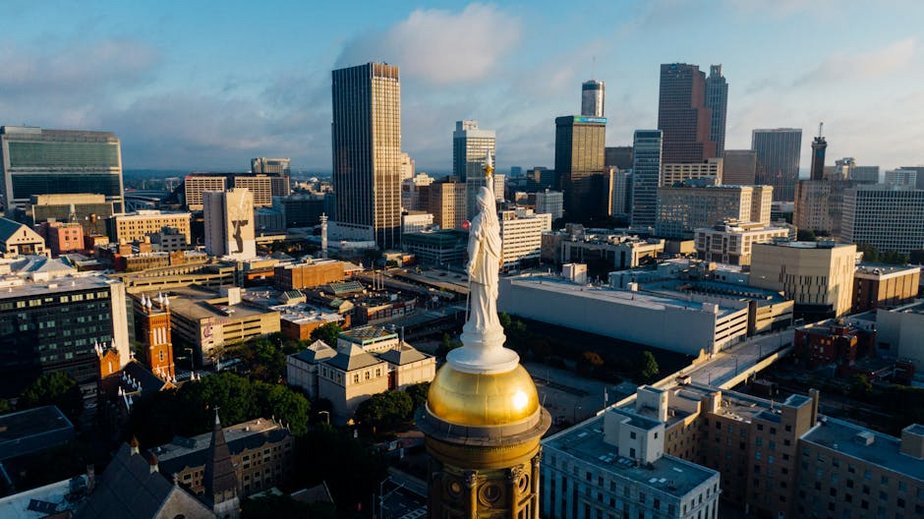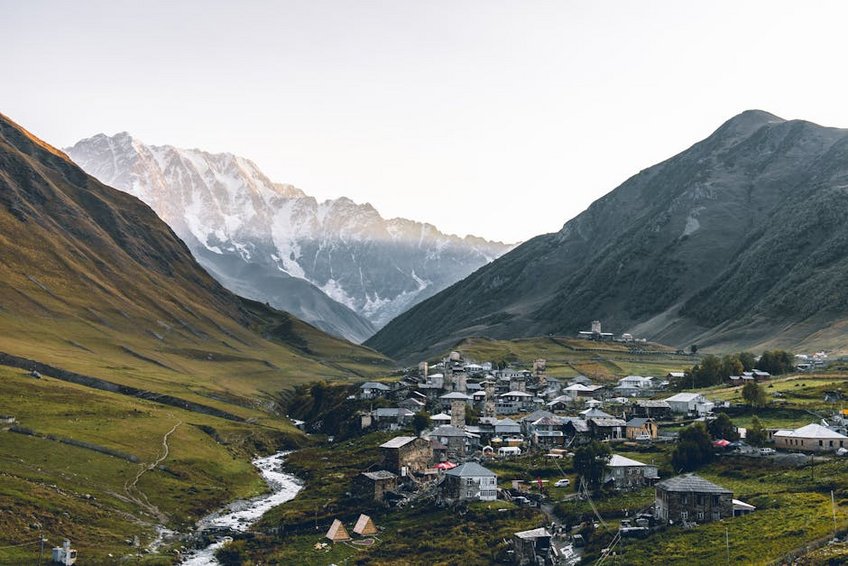Georgia Svaneti Tower Villages: Medieval Fortresses in the Caucasus
Exploring the Georgia Svaneti Tower Villages immerses you in a living medieval landscape where ancient stone towers pierce the sky against dramatic mountain backdrops. These UNESCO-protected defensive structures date from the 9th to 13th centuries, offering unparalleled cultural immersion amid Europe’s highest permanent settlements. This guide covers essential planning details, seasonal considerations, and authentic experiences for your Svaneti adventure.
Essential Svaneti Region Information
Upper Svaneti’s unique geography creates a natural fortress environment with villages perched between 1,400 and 2,200 meters elevation. The region’s isolation preserved distinctive Svan culture, language, and architectural traditions through centuries of invasion threats. You’ll discover four main village clusters accessible via mountain roads, each with characteristic stone towers and communal gathering spaces.
Svaneti’s climate features sharp seasonal variations, with heavy snowfall from November through April creating challenging access conditions. Summer months bring moderate temperatures ideal for hiking, while autumn offers spectacular foliage against the Caucasus peaks. The region maintains its traditional social structure centered around family clans and historic defensive networks.
Svaneti Tower History and Architecture
Understanding the towers’ construction reveals their sophisticated defensive purpose within Svan community life.
- Defensive towers served as family fortresses during blood feuds, with some structures reaching 25 meters tall and featuring multiple floors connected by ladders.
- Construction methods used local stone without mortar, creating remarkably durable structures that withstand earthquakes and harsh weather conditions for centuries.
- Watchtowers formed interconnected networks allowing villages to communicate via signal fires during invasions, creating Europe’s earliest warning systems.
- Budget travelers spend $35-50 daily using marshrutka transport, homestay accommodations, and self-catering with local market provisions, focusing on village-to-village hiking.
- Mid-range visitors allocate $75-120 daily for 4WD transfers, private guesthouse rooms with meals, and guided day hikes to remote towers and glaciers.
- Luxury experiences cost $150-250+ daily featuring boutique hotel stays in Mestia, private guides and drivers, and helicopter transfers to Ushguli during peak season.
- Georgia National Tourism Administration
- UNESCO World Heritage Centre
Cultural Significance and Preservation
Svaneti’s cultural heritage encompasses unique traditions beyond the iconic tower architecture. The Svan language represents a distinct Kartvelian branch unrelated to modern Georgian, preserved through oral poetry and polyphonic singing traditions. UNESCO designation in 1996 recognized Upper Svaneti’s outstanding universal value, leading to conservation efforts balancing tourism with cultural preservation.
Local communities maintain traditional subsistence practices including sheep herding, beekeeping, and seasonal transhumance between high and low pastures. You’ll encounter Svanetian hospitality through supra feasts featuring distinct culinary traditions and elaborate toasting rituals led by designated tamadas.
Village Layout and Community Structure
Svaneti’s village organization reflects practical defensive considerations and social hierarchies. Each settlement clusters around a central square with a defensive tower, church, and communal meeting house called a machubi. The machubi served as male gathering spaces for decision-making and conflict resolution, while women maintained separate domestic spheres within tower complexes.
Traditional Svanetian homes combine living quarters with defensive elements, including fortified basements for livestock and food storage during siege conditions. Modern restoration projects carefully preserve original layouts while incorporating contemporary amenities for resident families and visiting travelers.

Alt: “svaneti-medieval-towers-caucasus-mountains-landscape”
Planning Your Georgia Svaneti Tower Villages Trip
Organizing your Georgia Svaneti Tower Villages adventure requires careful seasonal planning and logistical preparation for this remote mountain region. Road conditions vary dramatically between summer accessibility and winter closures, while accommodation options range from basic guesthouses to renovated traditional homes. You should allocate 5-7 days minimum to experience multiple villages and undertake significant hiking routes between settlements.
Budget considerations must account for transportation costs from Tbilisi or Kutaisi, with 4WD vehicles essential for reaching higher villages during most seasons. The Svaneti region offers exceptional value compared to European mountain destinations, though prices increase during July-August peak season. Advance bookings become crucial for popular villages like Ushguli, where limited accommodation fills quickly.
Best Time to Visit Svaneti Region
Visit Svaneti between June and September for optimal hiking conditions and reliable road access to all major tower villages. Daytime temperatures range from 65-75°F (18-24°C) with cooler nights dropping to 45-55°F (7-13°C), perfect for mountain exploration. July and August bring the warmest weather but also occasional afternoon thunderstorms in higher elevations.
Shoulder seasons in May and October offer fewer crowds and dramatic landscape transitions, though some high passes remain snow-covered. Winter visits between November and April appeal to experienced ski tourers, with temperatures frequently below freezing and limited transportation options beyond Mestia. The region receives heavy snowfall creating spectacular scenery but challenging mobility.
Budget Planning and Costs
Your Svaneti trip budget varies significantly based on transportation choices and accommodation preferences.
Essential Preparation Checklist
Physical preparation should include cardiovascular training for hiking at altitude, with many trails ascending above 2,500 meters through variable terrain. Pack layered clothing systems accommodating temperature swings, waterproof outer layers for sudden mountain storms, and sturdy broken-in hiking boots with ankle support. You’ll need comprehensive travel insurance covering emergency helicopter evacuation from remote areas.
Documentation requires a valid passport with at least six months remaining, though most Western nationals receive visa-free entry to Georgia for up to one year. Book accommodations 2-3 months ahead for summer visits, especially in Ushguli where options remain limited despite growing tourism. Learn basic Georgian phrases and respect local customs regarding photography and religious site visits.
Top Svaneti Attractions and Activities
Svaneti’s tower villages offer diverse experiences from gentle cultural exploration to challenging high-altitude trekking across spectacular landscapes. The region contains approximately 200 surviving medieval towers concentrated in several key villages, each with unique characteristics and accessibility. Beyond the iconic architecture, you’ll discover ancient churches with remarkable frescoes, traditional crafts workshops, and breathtaking viewpoints across the Caucasus range.
Adventure activities include multi-day treks between villages, glacier approaches to Mount Shkhara, and cultural immersion through homestay experiences with Svan families. The region’s biodiversity encompasses rare Caucasian wildlife like the tur and chamois, while botanical enthusiasts find unique alpine flora during summer months. Photography opportunities abound with dramatic light conditions enhancing the ancient stone structures against mountain backdrops.
Must-See Tower Villages
Ushguli claims Europe’s highest continuously inhabited settlement status at 2,100 meters, featuring four interconnected hamlets with dozens of preserved towers against Shkhara glacier views. The village’s Lamaria Church contains important medieval icons and frescoes, while the surrounding landscape offers moderate hiking to nearby viewpoints. Access requires 4WD vehicles or a challenging day hike from Mestia during summer months.
Mestia serves as the regional capital with improved infrastructure, museums, and the iconic Seti Square surrounded by defensive towers. The Svaneti Museum of History and Ethnography displays exceptional medieval metalwork and icons, while the Margiani’s Tower museum recreates traditional tower interior layouts. From Mestia, numerous day hikes reach Koruldi Lakes with panoramic views across the entire region.
Chazhashi village within Ushguli complex provides the most photogenic tower concentration with approximately 200 structures preserved in their original context. This UNESCO core zone maintains authentic medieval urban planning with narrow stone pathways between fortified family compounds. Preservation efforts limit overnight stays, making day visits essential for experiencing this remarkable historical landscape.
Hiking and Outdoor Adventures
The classic Mestia to Ushguli trek spans 4 days through varied landscapes including alpine meadows, forested valleys, and traditional villages with tower complexes. This moderate difficulty route requires basic hiking fitness with daily stages of 15-20 kilometers and altitude gains up to 500 meters. You’ll encounter simple guesthouses in each overnight village, eliminating the need for camping equipment during summer months.
Shorter day hikes from Mestia include the 3-hour ascent to Koruldi Lakes at 2,700 meters, offering spectacular reflections of Mount Ushba in the alpine waters. More challenging routes ascend to the foot of Mount Ushba’s dramatic twin peaks or cross the Chalaadi Glacier with proper guide assistance. Winter brings ski touring opportunities for experienced backcountry enthusiasts with certified local guides.
Cultural and Historical Exploration
Svaneti’s religious heritage includes numerous medieval churches containing unique fresco cycles and precious metal icons saved from invaders. The Lamaria Church in Ushguli features 10th-century construction with later fresco additions, while the Matskhvarishi Church near Mestia preserves important St. George depictions. Many churches remain active worship sites, requiring respectful visitation and sometimes obtaining keys from village caretakers.
Traditional crafts continue in Svaneti villages, particularly metalworking using ancient techniques to create ceremonial cups and jewelry. You can visit local artisans in Mestia and smaller villages observing copper engraving and enamel work preserving distinctive Svan motifs. The region’s polyphonic singing represents an intangible cultural heritage, occasionally performed during community celebrations and supra feasts.
Practical Svaneti Travel Information
Reaching Svaneti involves overland travel from Georgia’s main cities, with the most reliable access via the Enguri River valley from Zugdidi. The journey from Tbilisi spans approximately 8-9 hours by road, while flights from Natakhtari airfield near Tbilisi to Mestia operate weather-permitting. Within the region, marshrutka minibuses connect major villages daily during summer, with reduced winter schedules focusing on the Mestia area.
Accommodation ranges from basic family homestays offering authentic cultural immersion to comfortable guesthouses with private facilities and traditional meals. Mestia provides the widest selection including small hotels with modern amenities, while Ushguli and other remote villages maintain simpler lodging options. Advance reservations become essential from June through September, with last-minute arrangements possible during shoulder seasons.
| Accommodation Type | Features and Amenities | Price Range (USD) |
|---|---|---|
| Family Homestay | Shared facilities, home-cooked meals, cultural exchange | $15-25 per night |
| Guesthouse | Private room, shared bathroom, breakfast included | $30-50 per night |
| Boutique Hotel | Ensuite bathroom, restaurant, tour arranging | $80-150 per night |
| Mountain Hut | Basic dormitory, self-catering, trekking access | $10-20 per night |


